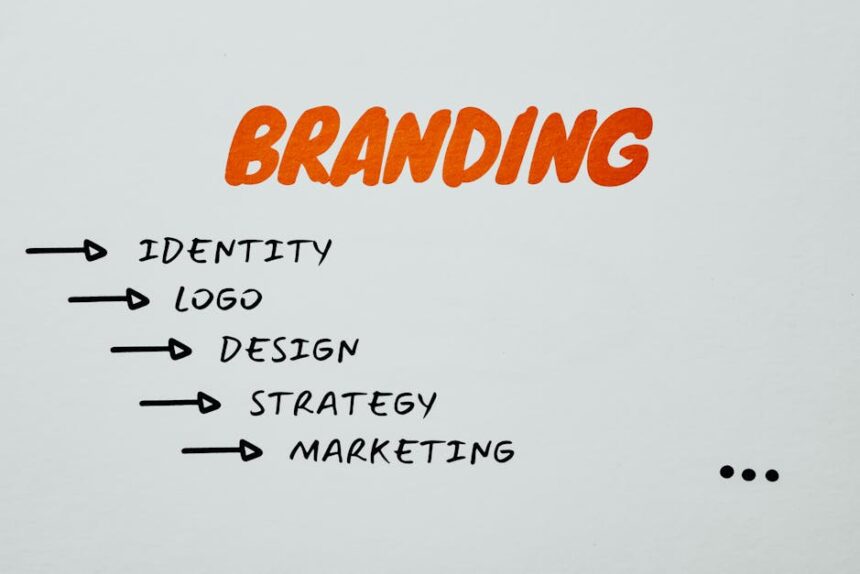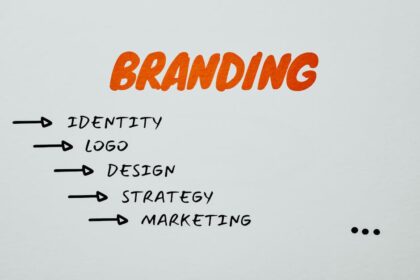Understanding and Diagnosing Ad Fatigue in Video Campaigns
Ad fatigue, often colloquially termed “ad wear-out,” represents a critical challenge in contemporary digital advertising, particularly within the dynamic realm of video creative. It describes the phenomenon where the effectiveness of an advertisement diminishes over time due to repeated exposure to the same target audience. Initially, an ad garners positive attention and drives desired actions, but with increasing frequency and diminished novelty, its impact wanes, leading to declining engagement rates, higher cost-per-acquisition (CPA), and potentially negative brand sentiment. The psychological underpinnings of ad fatigue are rooted in habituation and the mere-exposure effect. While initial exposure to a novel stimulus (an ad) can foster familiarity and positive associations, excessive, unchanging exposure leads to boredom, irritation, and cognitive discounting. The brain learns to filter out the familiar, rendering the ad invisible or, worse, actively annoying. This cognitive dismissal directly impacts key performance indicators (KPIs), turning what was once a highly effective video creative into a drain on marketing spend. Recognising the symptoms early and accurately diagnosing the root causes are paramount for advertisers seeking sustained campaign efficacy.
Symptoms of ad fatigue manifest across various metrics and audience feedback channels. A primary indicator is a noticeable decline in click-through rates (CTR) or view-through rates (VTR) for video ads, even when impressions remain high or increase. Conversions, whether sales, leads, or sign-ups, will similarly begin to stagnate or fall, indicating that viewers are no longer compelled to act. Cost metrics provide another crucial signal: CPA, cost-per-lead (CPL), or return on ad spend (ROAS) will deteriorate as the cost of acquiring each desired action rises due to the diminished responsiveness of the fatigued audience. Beyond quantitative metrics, qualitative signals are equally important. Increased negative comments or reactions on social media platforms, such as “seen this too many times,” “skip ad,” or direct complaints about ad repetition, are clear red flags. Brand lift studies might reveal a decline in ad recall or brand favorability. A rising frequency metric – the average number of times a unique user has seen an ad within a given period – often correlates directly with the onset of fatigue. While a certain level of frequency is necessary for memorability, exceeding an optimal threshold inevitably triggers diminishing returns. Diagnosing ad fatigue therefore requires a holistic view, integrating performance data, audience sentiment, and an understanding of underlying psychological principles to pinpoint when and why a video creative is losing its edge.
Tools and analytics play an indispensable role in accurately diagnosing ad fatigue. Ad platforms themselves (Meta Ads Manager, Google Ads, TikTok Ads Manager, LinkedIn Campaign Manager) provide a wealth of data, including impression, reach, frequency, CTR, VTR, conversion rates, and spend. Advertisers must regularly monitor these dashboards, paying close attention to trends rather than isolated data points. A sustained downward trend in engagement metrics coupled with an upward trend in frequency over several days or weeks is a strong indicator of fatigue. Beyond platform-specific data, integrating with a broader analytics suite like Google Analytics allows for deeper insights into post-click behavior: bounce rates, time on site, and conversion funnels, which might reveal if fatigued users are clicking but not converting. Social listening tools and brand monitoring platforms can track mentions, sentiment, and specific keywords related to ads, providing invaluable qualitative feedback directly from the audience. Survey tools can be deployed to conduct brand lift studies or direct feedback surveys to segments of the exposed audience, asking about ad recall, message clarity, and overall ad experience.
Key metrics to monitor for ad fatigue extend beyond the basics. While frequency is often cited as the primary driver, its interpretation requires nuance. An absolute frequency number (e.g., 3x per week) might be optimal for one campaign but detrimental for another, depending on the complexity of the message, the product’s price point, and the audience’s typical media consumption habits. Instead, look at effective frequency – the point at which an ad’s impact plateaus or declines. This often needs to be determined empirically through A/B testing and continuous monitoring. Reach and unique reach are also critical; if reach is saturating within a target audience while frequency continues to climb, it indicates overexposure to the same limited pool of users. Beyond traditional engagement rates, consider metrics like view completion rates for video ads, identifying if viewers are dropping off earlier than before. Post-impression or post-view conversions, rather than just clicks, provide a truer measure of the ad’s persuasive power. Incrementality testing, though more complex, can help isolate the true additional value generated by the ad, revealing when its incremental contribution becomes negligible.
Cohort analysis offers a powerful method for diagnosing ad fatigue by segmenting audiences based on their first exposure to an ad or ad set. By tracking the performance of these cohorts over time, advertisers can observe how engagement and conversion rates evolve as their cumulative exposure increases. For example, a cohort exposed to an ad in Week 1 might show high performance, but if that same cohort continues to be exposed to the identical ad in Week 2, Week 3, and Week 4, a clear decline in their responsiveness can be charted. This allows marketers to pinpoint not just that fatigue is occurring, but when it typically sets in for a given audience and creative. A/B testing, a cornerstone of optimization, also provides direct insights into creative wear-out. By running multiple variations of video ads simultaneously to different audience segments, marketers can directly compare the performance of a ‘stale’ ad against a fresh one. If the fresh creative consistently outperforms the older one on key metrics, it confirms the older ad is suffering from fatigue. Furthermore, testing different frequency caps against identical creative can help determine the optimal exposure level before effectiveness significantly diminishes. These diagnostic approaches, when combined, provide a robust framework for identifying ad fatigue and informing subsequent creative refresh strategies.
Foundational Principles for Combatting Ad Fatigue
Combatting ad fatigue in video creative isn’t merely about churning out new ads; it requires a strategic foundation built on deep audience understanding, a clear articulation of value, and compelling brand narratives. These foundational principles ensure that creative refreshes are purposeful, resonant, and effective, rather than a scattershot approach. Without these pillars, even the freshest creative risks quickly becoming just another piece of noise in a crowded digital landscape.
Audience segmentation and persona development form the bedrock of any effective anti-fatigue strategy. Generic video ads, by their nature, are more prone to fatigue because they try to appeal to everyone and end up resonating deeply with no one. True creative longevity stems from tailored messaging. Begin by segmenting your total addressable market into distinct groups based on demographics (age, gender, location, income), psychographics (interests, values, attitudes, lifestyle), behaviors (past purchase history, website visits, content consumption), and needs (pain points, aspirations). For each segment, develop detailed buyer personas. These personas are semi-fictional representations of your ideal customers, complete with names, backstories, motivations, challenges, and media consumption habits. Understanding who you are talking to, what their specific needs are, and where they are in their decision-making process allows for the creation of highly relevant video content. For example, an ad for a project management software could have one creative angle emphasizing ease of use for small business owners (who value simplicity), another highlighting advanced integrations for enterprise IT managers (who prioritize scalability), and yet another focusing on collaboration features for creative teams (who need seamless teamwork). By serving distinct creative variations to specific segments, you naturally reduce the frequency of exposure to any single ad within a smaller, highly relevant group, thereby mitigating fatigue. This precision targeting ensures that each video creative feels personalized and directly addresses the unique context and motivations of its intended viewer.
Customer journey mapping is the next crucial foundational element. Ad fatigue often arises when the same message is delivered regardless of where a prospect is in their purchasing journey. The journey typically spans stages like awareness, consideration, decision, and retention. The type of video creative that resonates at the awareness stage (e.g., a broad brand story or problem-solution narrative) is vastly different from what’s needed at the decision stage (e.g., a direct product demo, testimonial, or special offer). Mapping the journey allows advertisers to orchestrate a sequence of video creatives, each designed to progress the viewer through the funnel. For instance, an awareness-stage video might be a captivating short-form narrative establishing a problem your product solves. If a viewer engages with this, they might then be retargeted with a consideration-stage video showcasing specific features or benefits, perhaps a comparison with competitors. Finally, a decision-stage video could highlight a limited-time offer, social proof, or a clear call-to-action to purchase. This sequential, progressive storytelling combats fatigue by offering fresh, contextually relevant content at each touchpoint, building on previous interactions rather than simply repeating the initial message. It transforms disparate ads into a cohesive narrative, providing a sense of progression and new information, which keeps the audience engaged and less prone to wear-out.
A clear and compelling value proposition is vital. Even the most creatively diverse campaigns will fail if they don’t articulate why the product or service matters to the audience. Your value proposition is the unique benefit or solution your offering provides that sets it apart from competitors. It answers the fundamental question: “Why should I choose you?” When ad fatigue sets in, it often means the audience has either become numb to the value proposition or, more fundamentally, never fully grasped it. Refreshing video creative provides an opportunity to re-articulate this value from different angles, using new metaphors, scenarios, or testimonials. Instead of just saying “our software saves you time,” a fresh creative might show a user dramatically reducing their workload, or a testimonial from a client who achieved significant time savings. The value proposition should be clearly woven into the narrative of every video creative, even as the creative execution changes. This consistency in core message, delivered through diverse creative expressions, ensures that while the visual and auditory elements remain fresh, the underlying reason for purchasing remains clear and reinforced.
Finally, brand storytelling serves as the overarching framework that ties all video creative together and provides long-term immunity against fatigue. Brands that simply push products are inherently more susceptible to ad wear-out than brands that tell compelling stories. Storytelling creates emotional connections, builds brand loyalty, and provides a rich wellspring of content ideas. Instead of individual, isolated ads, think of your video creative as chapters in an ongoing brand narrative. This narrative can explore your brand’s mission, values, origin story, customer success stories, or even the challenges you’re helping to overcome. For example, Patagonia doesn’t just sell outdoor gear; they tell stories of environmental conservation and adventurous journeys. Their video creative often focuses on these broader themes, making the product a natural extension of a larger, inspiring narrative. When ad fatigue threatens a specific product ad, the brand can pivot to a different facet of its overarching story, maintaining engagement without directly pushing a product. This allows for a continuous flow of fresh, engaging content that reinforces brand identity and purpose, far beyond the lifespan of any single product-centric ad. A strong brand story gives creative teams an endless array of angles, characters, and settings to draw upon, ensuring that even as individual campaigns evolve, the core brand identity remains consistent and captivating.
Creative Refresh Strategies: Core Pillars
Overcoming ad fatigue requires a systematic approach to creative iteration and diversification. These core pillars represent distinct yet often overlapping strategies for injecting novelty and relevance into video advertising campaigns, ensuring sustained performance and audience engagement.
Variant Testing, at its most fundamental level, involves creating multiple versions of an existing video ad to determine which elements resonate most effectively with the target audience. This is not about creating entirely new concepts from scratch but rather systematically altering specific components to refresh the creative without undergoing a complete overhaul. Minor tweaks can include altering the call-to-action (CTA) text, changing the background music, adjusting the on-screen text overlays, or varying the pacing and editing style. For instance, a video ad might test “Shop Now” versus “Learn More” CTAs, or an uplifting soundtrack versus a more neutral one. Even subtle changes in font, color palette, or the specific voiceover artist can yield surprising differences in performance. The key is to isolate variables for clear measurement. Beyond these micro-changes, major overhauls within the variant testing framework might involve entirely new spokesperson (if using one), different settings for the same product demonstration, alternative opening hooks, or shifting the problem-solution framing. If an initial ad focuses on convenience, a variant might emphasize cost savings or durability. The power of variant testing lies in its scientific approach, allowing marketers to systematically understand what elements contribute to ad performance and to continuously optimize rather than guess. A/B/n testing frameworks are essential here, enabling the simultaneous testing of multiple variations against a control group to identify winning elements and inform subsequent creative iterations rapidly. This continuous refinement cycle extends the lifespan of core creative concepts by keeping them fresh and aligned with evolving audience preferences.
Narrative Evolution moves beyond simple variant testing to explore different facets of the brand’s story or product’s value proposition. Instead of repeating the same narrative, this strategy involves telling a “sequel,” a “prequel,” or exploring parallel stories. One powerful approach is the “chapter” based storytelling, where a series of video ads collectively tell a larger narrative arc. For example, a campaign could release a “Chapter 1” video introducing a problem, a “Chapter 2” demonstrating the solution, and a “Chapter 3” showcasing user success stories. Each video builds upon the previous, maintaining viewer interest by providing new information and progressing the story. Another effective method is to explore different angles of the same product or service. If an initial ad highlights a product’s innovative technology, subsequent ads could focus on its design aesthetics, environmental impact, or the lifestyle it enables. This diversifies the message without losing sight of the core offering. Integrating user-generated content (UGC) is a potent form of narrative evolution, as it inherently offers fresh, authentic perspectives. Real customer testimonials, unboxing videos, or creative uses of the product shared by users provide genuine social proof and a constant stream of novel content that feels organic and trustworthy. This not only combats fatigue but also builds community and trust around the brand.
Format Diversification addresses ad fatigue by changing the very medium and presentation style of the video creative. Sticking to one format, even if initially effective, will eventually lead to wear-out. This pillar encourages experimentation across a spectrum of video types. This includes varying the length, from ultra-short 6-second bumper ads ideal for YouTube and pre-roll to longer-form content (30-60 seconds or even longer for detailed explanations or brand stories). The aspect ratio is also crucial: vertical video (9:16) is paramount for mobile-first platforms like TikTok, Instagram Reels, and YouTube Shorts, while horizontal (16:9) dominates desktop and traditional video channels. Creating both versions ensures native fit and optimal viewer experience across platforms. Beyond length and aspect ratio, the style of video can be completely overhauled. If live-action video is currently in use, consider animation (2D, 3D, stop-motion) for a whimsical or illustrative approach. Motion graphics can effectively explain complex concepts with dynamic text and visuals. Interactive video ads, which allow viewers to click within the video to explore options or make selections, offer a highly engaging, non-linear experience that inherently combats passive viewing and fatigue. Shoppable video ads directly integrate e-commerce, allowing viewers to purchase products featured in the video with a click. Other effective formats include testimonial videos (authentic customer stories), explainer videos (how-it-works), unboxing videos (demonstrating the unboxing experience), and behind-the-scenes content (showing the human element or production process). Each format offers a unique storytelling canvas, allowing brands to continuously present their message in novel and captivating ways.
Contextual Relevance is a sophisticated strategy that fights ad fatigue by ensuring the video creative is not just new, but also maximally relevant to the specific viewer and their current situation. This is where data and technology intersect with creative execution. Dynamic Creative Optimization (DCO) is a powerful tool in this regard. DCO platforms leverage data points (demographics, location, time of day, browsing history, weather, audience segment) to automatically assemble and deliver personalized video ad variations in real-time. For example, a travel agency could use DCO to show a video ad for beach destinations to users in cold climates, or specific hotel offers based on a user’s previous website visits. Personalization at scale extends this principle, ensuring that individual users see video ads that directly speak to their immediate needs, interests, or stage in the customer journey. Geo-targeting allows for location-specific creatives, perhaps highlighting a local store or an event in the viewer’s city. Demographic and interest-based targeting ensures the creative elements (e.g., actors, music, language, scenarios) resonate with the specific segment being reached. Time-of-day/week optimization can tailor messages to when they are most relevant, like a breakfast food ad in the morning or a takeout ad in the evening. By continually ensuring that the video ad is highly relevant to the viewer’s context, the ad feels less like an interruption and more like a useful, timely piece of information, significantly reducing the likelihood of fatigue.
Emotional Resonance & Psychology delves into the deeper, often subconscious, elements that drive human engagement and combat boredom. Video is inherently an emotional medium, and leveraging this power is key to creating anti-fatigue creatives. Injecting humor, if appropriate for the brand, can create memorable, shareable content that viewers look forward to seeing. Empathy, by showcasing understanding of a viewer’s pain points and struggles, builds connection. Aspiration, by depicting a desired future state or lifestyle, motivates action. Conversely, leveraging the fear of missing out (FOMO) with limited-time offers or exclusive access can create urgency and drive immediate action before fatigue sets in. Understanding cognitive biases is also critical. Social proof, by featuring testimonials or showing large numbers of satisfied customers, leverages the human tendency to follow the crowd. Authority, through endorsements from experts or credible figures, builds trust. Scarcity and urgency, as mentioned with FOMO, can accelerate decision-making. Video creative can effectively address pain points by vividly illustrating a problem the target audience faces and then presenting the product as the clear, compelling solution. Alternatively, highlighting benefits (what the product does for the user) rather than just features (what the product is) resonates more deeply. By consciously weaving these emotional and psychological triggers into the narrative and visual design of video ads, marketers can create campaigns that not only avoid fatigue but actively build stronger, more enduring connections with their audience.
Advanced Creative Strategies for Sustained Engagement
Beyond foundational principles and core refresh techniques, truly mastering the art of overcoming ad fatigue in video creative involves advanced strategies that leverage modularity, deep audience understanding, cultural relevance, and collaborative partnerships. These approaches push the boundaries of traditional advertising, fostering continuous novelty and engagement.
Modular Creative Frameworks represent a sophisticated approach to rapid iteration and scaled personalization. Instead of designing each video ad from scratch, this strategy involves deconstructing video creative into atomic, interchangeable components or “modules.” These modules can include:
- Hooks: The first 3-5 seconds designed to grab attention (e.g., a startling statistic, a relatable problem, an intriguing visual).
- Problem Statement: A clear articulation of the challenge the audience faces.
- Solution Introduction: Presenting the product or service as the answer.
- Benefit Demonstration: Showcasing how the solution improves the user’s life.
- Proof Points: Testimonials, social proof, data, awards.
- Call-to-Action (CTA): Clear instructions on what to do next.
- Brand Elements: Logos, taglines, consistent visual identity.
With a library of these pre-produced modules, creative teams can quickly assemble dozens, even hundreds, of unique video ad variations by simply swapping out components. For example, a brand could test five different hooks with three different benefit demonstrations and two different CTAs, resulting in 30 unique combinations. This dramatically speeds up the creative production cycle, making continuous A/B/n testing feasible at scale. It also allows for granular personalization; for a specific audience segment, a relevant problem statement and benefit demonstration can be paired with an appropriate hook. Furthermore, AI-assisted creative generation and testing tools are emerging that can automate the process of combining these modules, predict optimal combinations based on historical performance data, and even generate text overlays or voiceovers using generative AI. This level of modularity not only fights fatigue by constantly presenting fresh combinations but also optimizes performance by systemically identifying the highest-performing elements.
Audience-Specific Messaging takes segmentation to an even finer grain, tailoring not just the creative content but the entire message and its emphasis based on the precise audience segment and their stage in the customer journey. For top-of-funnel (awareness) audiences, video creative should be broad, captivating, and brand-focused. It might highlight a major pain point, introduce a new concept, or tell an aspirational brand story. The goal is to capture attention and establish brand recall, often without a hard sell. As users move into the middle-of-funnel (consideration), video ads shift to providing more detailed information, feature comparisons, explainer content, or deeper dives into product benefits. Here, the creative might address common questions, provide proof points, or showcase various use cases. The tone is informative and persuasive. Finally, for bottom-of-funnel (conversion) audiences, video creative should be highly conversion-focused, leveraging urgency, scarcity, strong CTAs, testimonials, and clear value propositions. This might include limited-time offers, direct product demonstrations tailored to specific purchase triggers, or social proof from users who have already converted. Retargeting creative strategies are a prime example of audience-specific messaging. Instead of showing the same ad again to someone who has visited your website, the retargeting video could address a common objection (e.g., “Still thinking it over? Here’s why our product is different…”), offer a special discount to encourage conversion, or showcase a complementary product based on their browsing history. This nuanced approach ensures that every video ad is not just “new” but also highly relevant and persuasive to the specific individual seeing it, maximizing its impact and preventing fatigue that comes from irrelevant repetition.
Leveraging Trends & Pop Culture provides a potent, though sometimes risky, method for injecting immediate relevance and novelty into video creative. Brands that can authentically tap into current memes, viral sounds, trending challenges, or popular cultural moments can achieve significant virality and engagement. For instance, a brand quickly adapting a popular TikTok sound or challenge into their video ad can instantly connect with a massive, engaged audience that values authenticity and timeliness. This strategy creates a sense of “in-the-know” relevance, making the ad feel less like an advertisement and more like part of the cultural conversation. However, this approach comes with crucial caveats: authenticity and brand alignment are paramount. Forcing a trend or meme that doesn’t genuinely fit the brand’s voice or values can backfire, appearing disingenuous or opportunistic. The creative team must have a deep understanding of the trend, its nuances, and whether it resonates with their target audience. Furthermore, speed is essential; trends are fleeting, so rapid creative production and deployment are required to capitalize on their short lifespans. Done correctly, leveraging trends can provide significant, short-term boosts in engagement and brand favorability, serving as a powerful anti-fatigue mechanism by constantly refreshing the creative with culturally relevant content.
Influencer & Creator Collaborations offer a multifaceted solution to ad fatigue by diversifying voices, formats, and distribution channels. Partnering with relevant influencers or content creators allows brands to tap into their established audiences and leverage their unique creative styles. Instead of the brand’s in-house team producing all video ads, creators provide an authentic, often unpolished, and highly relatable perspective. This authenticity is a powerful antidote to traditional ad fatigue, as viewers are increasingly skeptical of slick, corporate messaging. Creators can produce a wide range of video content, from organic product reviews and unboxing videos to sponsored challenges and lifestyle integrations. Each creator brings their own distinct aesthetic, tone, and storytelling approach, meaning that a brand can launch numerous video ad variations simply by collaborating with multiple creators. This not only provides a continuous stream of fresh creative but also expands reach into new, highly engaged audience segments. The measurement of impact is crucial here: beyond direct conversions, marketers should track brand lift, sentiment analysis, and audience engagement rates unique to influencer-generated content. These collaborations allow brands to maintain a fresh presence without exhausting their internal creative resources, providing an external engine for creative novelty and a highly effective way to combat ad wear-out.
Technical & Distribution Aspects in Overcoming Ad Fatigue
Beyond the creative itself, the technical and distribution strategies employed for video advertising significantly influence the onset and management of ad fatigue. How ads are delivered, to whom, and across which platforms, directly impacts their effectiveness and longevity. Optimizing these technical parameters is as crucial as refreshing the creative assets.
Frequency capping best practices are fundamental to preventing overexposure. While a certain level of frequency is necessary for message recall (often cited as 3-7 exposures per week), exceeding this threshold invariably leads to diminishing returns and irritation. Most ad platforms offer robust frequency capping options, allowing advertisers to set a maximum number of times a unique user sees an ad within a specified period (e.g., 3 impressions per user per 7 days). However, simply setting a cap isn’t enough; continuous monitoring and adjustment are required. Different audiences may have different optimal frequencies. A highly engaged, niche audience might tolerate higher frequency for valuable content, while a broad, top-of-funnel audience will fatigue more quickly. Furthermore, the type of creative influences optimal frequency. Highly engaging, narrative-driven content might sustain higher frequency than a direct-response ad. It’s also critical to apply frequency caps at the campaign, ad set, and even individual ad level, depending on the platform’s capabilities and the campaign’s complexity. Neglecting frequency capping across different campaigns targeting the same audience can lead to cumulative overexposure, even if individual campaigns appear to be within their limits. Advanced marketers might experiment with dynamic frequency capping, where the cap adjusts based on performance metrics: if CTR is dropping, reduce frequency; if it’s holding strong, perhaps slightly increase it.
Ad placement optimization is another critical technical consideration. The context in which a video ad is seen significantly influences its reception and the likelihood of fatigue. An ad that feels intrusive in one placement (e.g., a non-skippable pre-roll on a short video) might be perfectly acceptable in another (e.g., a discovery ad in a user’s social feed). Advertisers must meticulously select placements that align with user behavior and campaign goals. On platforms like YouTube, understanding the difference between in-stream (skippable/non-skippable), in-feed (discovery), and bumper ads is crucial. Each has a different optimal length, creative style, and potential for fatigue. On social media platforms (Meta, TikTok), understanding the nuances of feed placements, Stories, Reels, and In-Stream Video is vital. A vertical, fast-paced ad designed for Reels will feel out of place and quickly fatigue viewers if forced into a traditional horizontal in-stream placement. Optimizing placements also involves considering the user’s screen time and attention span within that environment. A user scrolling quickly through a TikTok feed requires an immediate hook, whereas a user watching a longer YouTube video might tolerate a more narrative pre-roll. Continuously analyzing placement performance metrics (viewability, completion rates, engagement) allows for the reallocation of budget to the most effective, least fatiguing environments.
Platform-specific creative nuances are paramount. A “one-size-fits-all” video creative strategy is a direct path to ad fatigue and inefficiency. Each major advertising platform has its own unique audience demographics, content consumption habits, technical specifications, and best practices for video creative.
- TikTok: Demands short-form, vertical (9:16), authentic, often UGC-style content that feels native to the platform’s “For You Page.” Pacing is rapid, with immediate hooks, trending sounds, and on-screen text being crucial. Highly produced, polished ads often underperform.
- YouTube: Supports a wider range of video lengths and formats (long-form explainers, short bumpers, skippable/non-skippable). It’s a search-driven platform for many, so keyword relevance and clear value propositions are key for discovery ads. Brand storytelling and educational content thrive here.
- Meta (Facebook/Instagram): Favors vertical or square video for mobile feeds, with strong visual hooks in the first 3 seconds to capture attention without sound. Stories and Reels require vertical, fast-paced content similar to TikTok, but with potential for slightly more polished production. Live video also performs well here.
- LinkedIn: Primarily professional. Video creative tends to be more informational, thought leadership-driven, case study-focused, or product-demo oriented. Tone is professional, often focusing on business solutions and ROI.
Understanding these platform-specific requirements allows advertisers to produce tailored video assets that feel native to each environment, reducing friction and the perception of being an “ad,” thus mitigating fatigue. An ad that blends seamlessly into the user’s feed is less likely to be perceived as an interruption.
Finally, creative asset management and version control are often overlooked but critical technical aspects. As the number of video creative variations grows (due to modular frameworks, format diversification, and audience-specific messaging), keeping track of all assets becomes a significant challenge. A robust digital asset management (DAM) system or a structured cloud-based storage solution is essential. This allows creative teams to easily categorize, tag, and retrieve different versions of video ads, ensuring that the correct, freshest version is always deployed to the right audience segment. Version control ensures that everyone on the team is working with the latest iterations and that old, fatigued assets are properly archived or retired. Without effective asset management, ad operations become chaotic, leading to wasted spend on outdated creatives or delays in launching fresh content. Furthermore, this system should ideally integrate with ad platforms to streamline the upload and deployment process, reducing manual errors and accelerating the creative refresh cycle. Efficient asset management directly supports the agility required to constantly fight ad fatigue by making creative iteration and deployment a smooth, scalable process rather than a bottleneck.
Measurement and Iteration Loop for Continuous Anti-Fatigue Efforts
The battle against ad fatigue is not a one-time fix but an ongoing process demanding continuous measurement, analysis, and strategic iteration. Establishing a robust feedback loop that allows marketers to identify emerging fatigue, test new creatives, learn from performance, and rapidly adapt is paramount for long-term campaign success.
Setting up robust A/B testing protocols is the cornerstone of this iteration loop. While the concept of A/B testing is widely understood, its effective implementation for combating ad fatigue requires careful planning. This involves defining clear hypotheses for each creative variation (e.g., “Changing the hook from a problem statement to an aspirational visual will increase VTR by 10%”), isolating variables to ensure accurate attribution of performance changes, and running tests for a sufficient duration and with adequate budget to achieve statistical significance. For video creative, A/B tests can compare different hooks, calls-to-action, pacing, music, voiceovers, or even completely different narrative approaches. It’s crucial to test new creative against the current “control” (the ad currently in market) to directly measure the impact of the refresh. Beyond simple A/B splits, multivariate testing allows for the simultaneous testing of multiple elements within a single ad, providing insights into which combination of factors performs best. The results of these tests shouldn’t just inform the next creative iteration but also contribute to a growing knowledge base about what resonates with specific audience segments. Documenting test results, including both successes and failures, builds institutional knowledge that can inform future creative strategies and accelerate the anti-fatigue process.
Analyzing results beyond direct conversions is essential because ad fatigue often manifests in softer metrics before impacting the bottom line. While sales or leads are the ultimate goals, a nuanced analysis requires looking at a broader spectrum of indicators. Brand lift studies, though often more complex to conduct, can reveal changes in brand awareness, ad recall, message association, and brand favorability. A video ad might still drive clicks, but if it’s contributing to negative brand sentiment due to overexposure, its long-term value is questionable. Engagement metrics specific to video, such as view completion rates, average view duration, and interaction rates (clicks on cards, polls, etc.), provide insights into how captivated viewers are by the creative. Social listening and sentiment analysis tools can monitor online conversations around your brand and specific ad campaigns, detecting early signs of irritation or negative perception (“tired of seeing this ad”). Post-impression or post-view metrics, which track conversions from users who saw the ad but didn’t necessarily click on it, offer a broader view of its persuasive power. Furthermore, analyzing user behavior after engaging with the ad (e.g., time on site, pages visited, subsequent actions) can reveal if the creative is attracting high-quality traffic or merely superficial clicks. A holistic view, encompassing both hard performance metrics and softer brand signals, provides a comprehensive understanding of ad performance and early warning signs of fatigue.
Establishing a creative refresh cadence is a proactive measure against ad fatigue. Instead of waiting for performance to tank, define a regular schedule for introducing new video creative variations. This cadence will vary depending on factors like audience size, media spend, and campaign intensity. For very high-volume campaigns targeting broad audiences, a weekly or bi-weekly refresh might be necessary. For smaller, niche campaigns, a monthly or quarterly refresh could suffice. The goal is to consistently inject novelty into the ad experience before the audience becomes oversaturated. This cadence isn’t just about launching new ads; it involves a continuous pipeline of creative concepting, production, and testing. It requires a dedicated budget and resources for ongoing creative development. This proactive approach transforms the reactive process of “fixing” fatigued ads into a strategic cycle of continuous optimization, ensuring that the creative never gets stale enough to cause significant performance drops.
Learning from failure and success is paramount. Not every creative refresh will be a resounding success, and that’s an inherent part of the learning process. What is critical is to meticulously document the outcomes of each test, regardless of the result. Analyze why a particular creative variation succeeded or failed. Was it the hook? The call to action? The overall tone? The specific visual style? Over time, this cumulative learning builds a powerful internal knowledge base, allowing the marketing team to develop an intuitive understanding of their audience’s preferences and what types of video creative resonate most effectively. Successful elements can be isolated and repurposed into new variations, creating a positive feedback loop. Similarly, identifying what doesn’t work saves future resources and prevents repeating past mistakes. This analytical rigor transforms ad fatigue from an insurmountable obstacle into a valuable data point, guiding continuous creative improvement.
Finally, fostering an “always-on” testing mindset across the marketing and creative teams is the ultimate defense against ad fatigue. This means viewing every video ad as a hypothesis to be tested, rather than a final product. It implies a culture of continuous experimentation, curiosity, and adaptability. Instead of batching creative production and launching “set-it-and-forget-it” campaigns, the “always-on” mindset embraces constant iteration, monitoring, and optimization. It requires cross-functional collaboration, ensuring that creative teams are in constant communication with media buyers and data analysts to understand real-time performance and audience feedback. This agile approach to video creative ensures that as soon as any signs of fatigue emerge, the team is ready with pre-tested variations or the ability to rapidly produce new content. This dynamic, responsive framework ensures that video campaigns remain engaging, effective, and resilient against the inevitable challenge of ad wear-out, continually driving superior performance and building lasting brand connections in an ever-evolving digital landscape.











